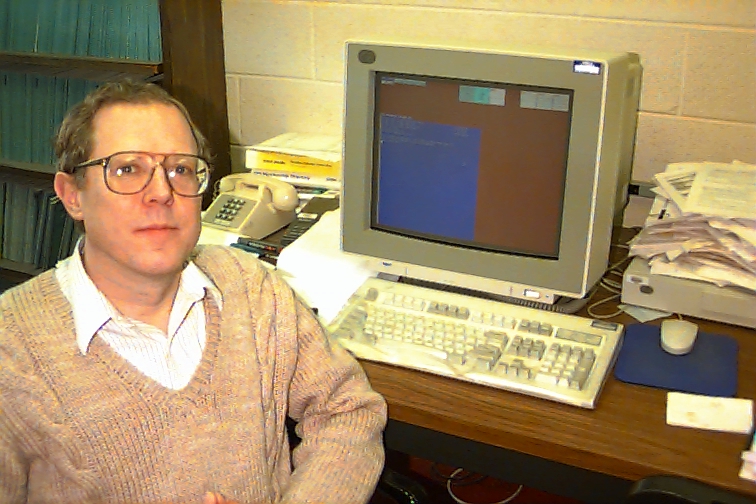
FULL CODE FACT SHEET 
1. Code Name: FULL
2. Category: VIIc. Linear Stability: 2D Kinetic
3. Responsible Physicist: G. Rewoldt
4. Others involved in code development: W. M. Tang
5. One line description: Comprehensive kinetic eigenfrequency- eigenfunction code for high-n tokamak and stellarator instabilities, with associated quasilinear transport.
6. Computer systems which code runs on: Crays, UNIX workstations
7. Typical running time (if applicable): 20 minutes (Cray)
8. Approximate number of code lines: 5000
9. Does this code read data files from another code? Yes. Numerical equilibrium version of code reads in PEST-I format "MAPDSK" and "MAPOUT1" files from PEST equilibrium and mapping codes, or equivalent codes (JSOLVER equilibrium code, etc.). There is also an "s-alpha" model MHD equilibrium version of the code. Recently, there is also a stellarator (non-axisymmetric) version of the FULL code which uses MHD equilibrium information produced by the 3D VMEC equilibrium code, after processing by the TERPSICHORE and VVBAL codes.
10. Does this code produce data files that can be read by another code? No.
11. 1-2 paragraph description of code: The "FULL" code constitutes a solution of the linearized gyrokinetic equation in toroidal geometry, without additional frequency orderings. It employs the "ballooning representation" for high-n instabilities such as the toroidal drift mode (trapped-electron-eta-i mode), the kinetically-calculated MHD ballooning mode, and the high-n TAE or "gap" mode. It uses a model collision operator which is valid in the banana regime and part of the plateau regime. A Ritz method with Hermite basis functions along the equilibrium magnetic field lines is used to solve the final integro- differential equations. In addition to the linear growth rates, real frequencies, and eigenfunctions, the code also computes the associated quasilinear particle and energy fluxes and the density and temperature fluctuation levels for each species, in terms of an externally specified nonlinear saturation level. The code includes bounce frequency resonances for trapped particles and transit frequency resonances for untrapped particles of each species, magnetic drift (precession) frequency resonances, full finite Larmor radius effects, and an approximate model for sheared toroidal rotation. The code exists in electrostatic and fully electromagnetic versions. The axisymmetric electrostatic version of the FULL code now contains an improved ExB rotation model.
12. Similar codes to this code, and distinguishing differences: FULL is an eigenvalue code, and Mike Kotschenreuther's code is an initial value code which solves essentially the same equations by completely different numerical methods. The two codes are compared in: M. Kotschenreuther, G. Rewoldt, and W.M. Tang, Comp. Phys. Comm. 88, 128 (1995).
13. Journal References describing code (up to 3): G. Rewoldt, W.M. Tang, and M.S. Chance, Phys. Fluids 25, 480 (1982). G. Rewoldt, W.M. Tang, and R.J. Hastie, Phys. Fluids 30, 807 (1987). The improved ExB rotation model is described in: G. Rewoldt, M.A. Beer, M.S. Chance, T.S. Hahm, Z.Lin, and W.M. Tang, Phys. Plasmas 5, 1815 (1998). The stellarator version is described in: G. Rewoldt, L.-P. Ku, W.M. Tang, and W.A. Cooper, Phys. Plasmas 6, 4705 (1999).
14. New code capabilities planned for next 1-2 years:
15. Code users: G. Rewoldt
16. Present and recent applications of code: Investigation of linear growth rates and quasilinear transport in TFTR, DIII-D, NSTX, and other tokamaks, and comparison with experimental results, for normal and reversed magnetic shear regimes. Also, similar calculations for NCSX stellarator designs and for LHD experimental cases.
17. Status of code input/output documentation. Check one: ( ) does not exist (X) incomplete ( ) exists
18. Year code was first used and present frequency of use: 1980; daily.
19. Estimate of Man-Years invested in developing code: ~7 (very roughly)
20. Categories of usage of Code (Check all that apply): (X) application code to do analysis and prediction of experiments (X) numerical testbed of theoretical ideas ( ) physics module to be used in integrated modeling ( ) code for machine design
21. Language code is written in: FORTRAN
22. Results of intercomparisons with other codes and results of validation against experiments: Compared with M. Kotschenreuther's initial value code (cf. 12.) and with M. Beer's gyrofluid code; agrees with both within 5-10% in applicable regimes for toroidal drift modes. Stellarator version benchmarked against tokamak version; good agreement.